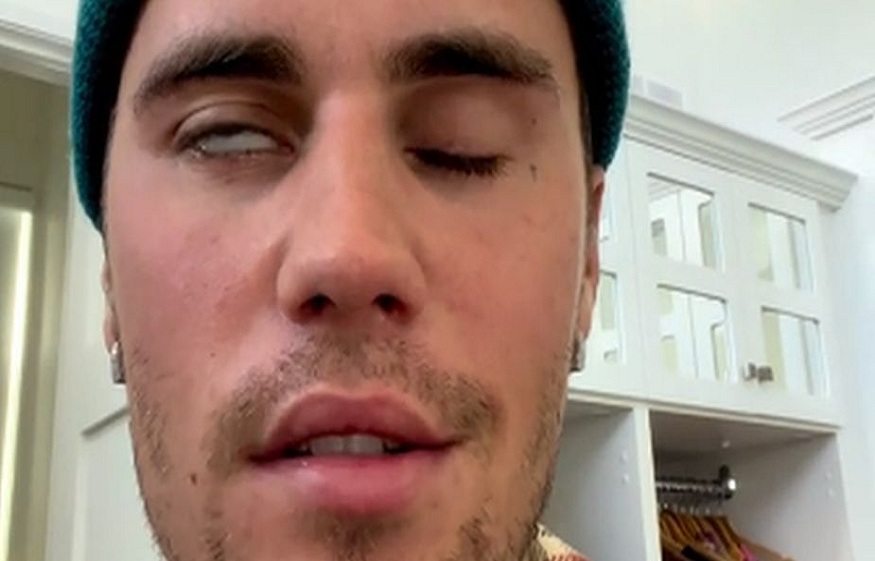Ramsay Hunt Syndrome: Causes and Treatment

About three weeks ago famous pop star, songwriter and teen idol Justin Bieber revealed that he was diagnosed with a neurological condition known as Ramsay Hunt syndrome. Here we will know more about this rare neurological condition and if there are any treatments.
There are three discrete neurological conditions called the Ramsay Hunt Syndrome (RHS)- Ramsay Hunt Syndrome type-I, Ramsay Hunt Syndrome type-II, Ramsay Hunt Syndrome type-III. These were first described by Dr. James Ramsay Hunt, an American neurologist in 1907.
Ramsay Hunt Syndrome type-I is also called Ramsay Hunt Cerebellar Syndrome. It is a rare degenerative, neurological disorder that causes involuntary and irregular twitching of muscles and intention tremors. It also causes ataxia which is a lack of voluntary coordination of muscle movement. Ramsay Hunt Syndrome type-III is also known as Hunt’s disease. It affects the palmar branch of the ulnar nerve responsible for wrist and finger movement. Therefore it is also known as Artisan’s Palsy. Both RHS type-I and RHS type-III are less commonly referred to as Ramsay Hunt Syndrome.
Ramsay Hunt Syndrome type II is more commonly known as Ramsay Hunt Syndrome. It is also known as Herpes Zoster Oticus. Justin Bieber was diagnosed with this neurological condition. It is a rare but severe condition caused by the Herpes Zoster Virus.
Herpes Zoster Virus is also responsible for chickenpox. After a person gets chickenpox the virus may go to sleep in Ganglion Nerve which in rare conditions gets reactivated. The nerve that controls all facial movements originates from a single nerve, the 8th cranial nerve called Facial Nerve. It comes from behind the ear and divides into 5 branches.
It controls the forehead muscle, eye movement, upper lips movement, lower lip movement, and neck and chin muscles. Herpes Zoster Virus attacks the Facial Nerve resulting in weak movement or paralysis of the entire half of the face. Since the facial nerve travels close to the ear canal, auditory symptoms such as pain, hearing loss, tinnitus and vertigo along with rash around the ear and inside the mouth are also detected. If one side of the face becomes paralyzed without any other symptom would be called Bell’s Palsy.
However if significant pain and rash also appears in the outer ear of the same side of face paralysis then this condition would be known as Ramsay Hunt Syndrome. The exact cause of this neurological disease is unknown. Deliberate induced immunosuppression could be achieved through drugs taken for cancer treatment or transplant surgeries. Non deliberate induced immunosuppression may arise due to many complement deficiencies and other chronic infections such as HIV.
What is the treatment of this syndrome
Treatment of Ramsay Hunt Syndrome involves oral steroids, antiviral medications, and neuro-modulating drugs to alleviate pain. Doctors also administer steroids and antibiotics for the outer ear and mouth rash. According to several experts, for early and complete recovery, the treatment must be started within three days of the symptoms. If no severe damage is seen it may take two to three months for full recovery. If the diagnosis is delayed it may take months for recovery. There have been cases in which the patient could not recover fully, resulting in permanent hearing loss, facial weakness and damage to cornea.
Complications of this syndrome
This syndrome can lead to permanent hearing loss or at least partial loss with facial weakness. The syndrome can lead to eye damage leading to the problem in the cornea and pain in the eye and blurred vision.
To prevent this problem, chicken pox vaccines are timely given to babies, which reduces the chances of getting this disease. Also shingles vaccines are given to people who are 50 years or older.
Even though it is uncommon in India, Kochi and the nation as a whole are not wholly foreign to it. The city’s physicians estimate that 8–10 instances occur annually, resulting in a search for the top neurologist in ernakulam, the central region of the city.

 WHAT IS SLEEP APNEA AND WHY SHOULD YOU CARE?
WHAT IS SLEEP APNEA AND WHY SHOULD YOU CARE?  WHAT IS A VASECTOMY? EVERYTHING YOU NEED TO KNOW
WHAT IS A VASECTOMY? EVERYTHING YOU NEED TO KNOW  Vaccination Schedules For Cats And Dogs: What Every Pet Owner Should Know
Vaccination Schedules For Cats And Dogs: What Every Pet Owner Should Know  The History and Cultural Significance of Ayahuasca
The History and Cultural Significance of Ayahuasca  Understanding Common Health Issues in Small Animals: Insights from a Veterinarian’s Perspective
Understanding Common Health Issues in Small Animals: Insights from a Veterinarian’s Perspective  Navigating Your Pet’s Health: What to Expect from Your General Veterinarian
Navigating Your Pet’s Health: What to Expect from Your General Veterinarian  Tennessee Men’s Clinic Highlights the Transformative Power of Fitness on Men’s Lives
Tennessee Men’s Clinic Highlights the Transformative Power of Fitness on Men’s Lives  Behind the Scenes: A Day in the Life of a Veterinary Hospital Staff Member
Behind the Scenes: A Day in the Life of a Veterinary Hospital Staff Member